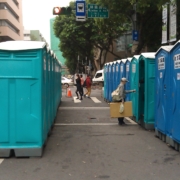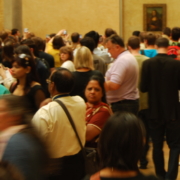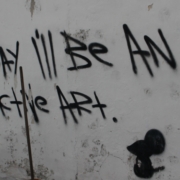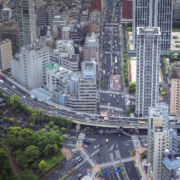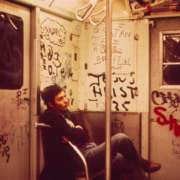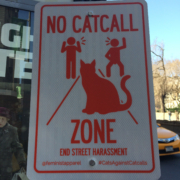Why do some cities appear to have more graffiti and street art than others?
Cities and urban locations vary not only on their size, topography, the people who live, work, and visit there, the kinds of businesses they support, but on the types of structures that are built to enable the activities that occur in these locales.
Most cities and urban locations also have considerable diversity in the types of neighborhoods that develop within their confines, including ones that are more residential in nature, and those that have more commercial buildings where people work, shop, or ones in which they learn (i.e., schools) or worship.
This diversity is frequently reflected in the visual landscape, including the types of structures that are built and their condition, and the amount, type and quality of the green space, like parks, ravines, etc.
That being said, frequently people who travel or vacation to or in other cities note the abundance of graffiti and street art in these locations. Although these individuals may not be able to distinguish among different types of graffiti, street art, murals, and public art, this visual information typically impacts visitors and tourists.
Although the question of whether a city (or indeed a neighborhood) has more graffiti, etc. than others) is open for empirical evaluation, and doing so would require an enormous amount of resources, here are some thoughts about why this may occur.
Despite being frequently beat up by critical criminologists, the Routine Activities Theory, though a relatively simple explanation, might provide some initial insights. According to this explanation, the presence of graffiti and street art might be facilitated by a considerable number of suitable targets, no or few capable guardians, and highly motivated people.
With respect to suitable targets. Cities (or neighborhoods) where there are lots of abandoned buildings (from houses that are speculated on, to factories and warehouses), train yards, and parking lots, may be ripe for graffiti writers and street artists to do their thing. Additionally, in these areas there may also be certain norms about both private and public property. In other words it may be okay to spray graffiti on a surface that is slated for demolition, new siding, or a new paint job. On the other hand, if the structure is a house of worship then it may be deemed off limits as are brick surfaces of a building, whereas the wooden doors may be up for grabs as they can be easily painted over are.
Closely related to this issue is how a city’s Department of Public Works or Business Improvement District/s engage in graffiti/street art abatement. For example, they may clean or buff graffiti/street art on an irregular basis. Inevitably this can set the tone for the abundance of graffiti/street art or graffiti writers/street artists to seek alternative surfaces. Along with lots of suitable targets, a city or neighborhood may provide better access to materials, like paint, markers, etc. used by writers and artists in their applications. Additional factors may be proximity to copy shops, printers etc. where street artists can print their own stickers, wheat pastes etc. at a fraction of the cost than doing this on a home printer. As for the many types of street art, this may in fact be actively encouraged by an arts district.
In terms of capable guardians, a neighborhood may not have “enough” motivated private security guards, municipal police officers, or concerned neighbors to respond to graffiti writers and street artists. This may be because the public and private or public security officers are busy doing more important things, don’t really care, or the citizens in that neighborhood are apathetic, or have communicated to public and private safety officials that they want them to focus on more important challenges.
Finally, a city or neighborhood may have an active graffiti and street art subculture or scene. People who are part of this collectivity typically know each other, hang together, and collaborate (or sometimes compete) with each on graffiti/street art. All told they are part of the street culture that develops in different parts of an urban location.
Every relatively large city has graffiti and street art. Because of the ephemeral nature of graffiti and street art, the amount and types of this work changes and can be more or less than that which appears in similar sized urban locations. Understanding the subtle dynamics is more complicated to understand, but worth knowing about if one is to take this modern form of visual communication seriously.
Photo: Robert Wallace
Athens Graffiti


